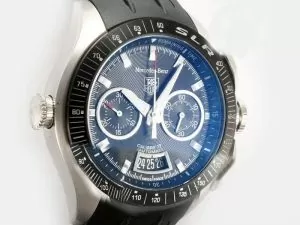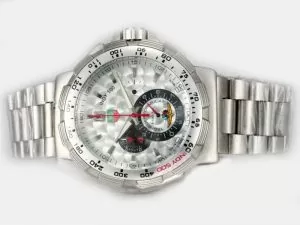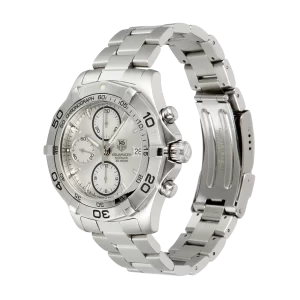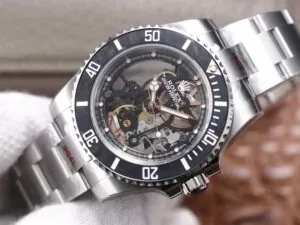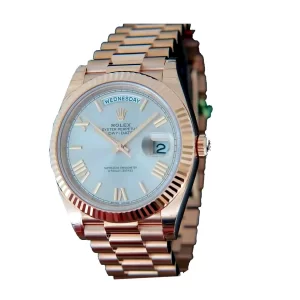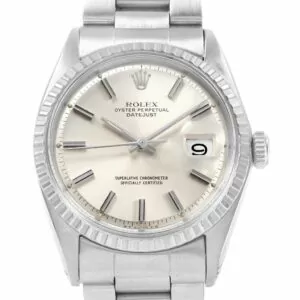The Evolution of the Replica TAG Heuer Monaco Chronograph
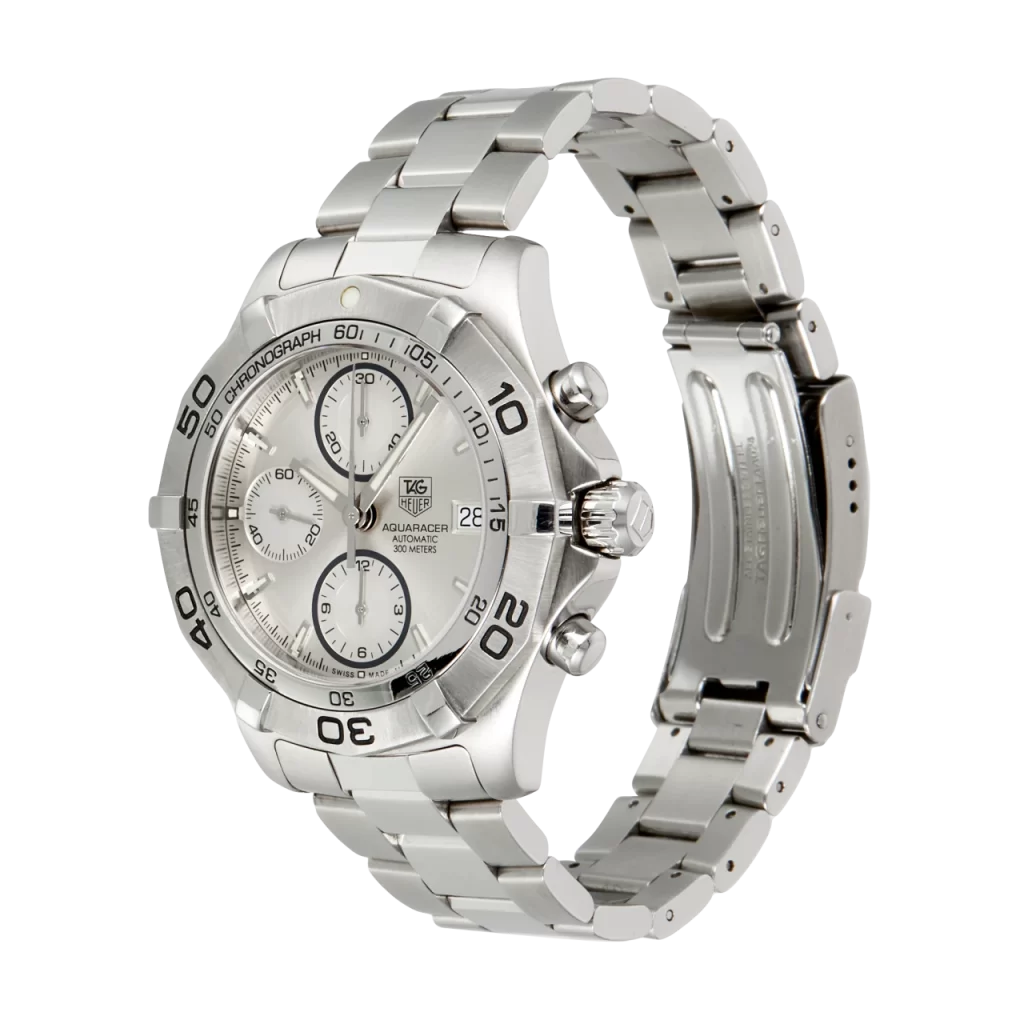
The TAG Heuer Monaco Chronograph stands as an enduring symbol of innovation, a watch that has continuously evolved since its introduction in 1969. Initially launched under the Heuer brand, the Monaco was an audacious departure from the traditional round chronographs of its time. It featured a square case, designed to embody both the precision of motorsport timing and the daring spirit of the 1960s. As the world around it hurtled toward new frontiers in technology, design, and speed, the Monaco was there to capture the zeitgeist of a rapidly changing era.
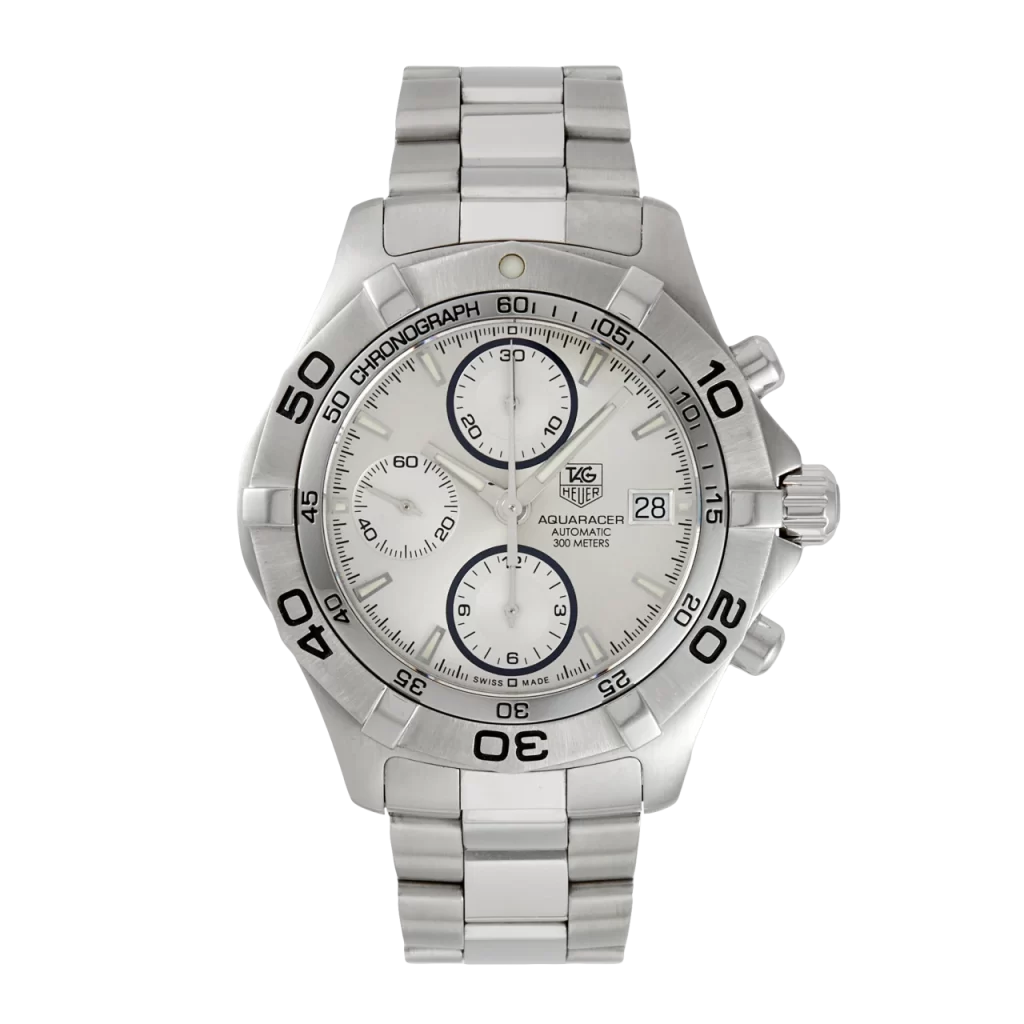
The 1960s were marked by acceleration, both literal and metaphorical. On one hand, space missions sent astronauts to the Moon, while on Earth, Formula 1 cars became faster, more powerful, and more dangerous with each passing season. In the world of design, architecture embraced sharp, geometric forms, and the vibrant pop art movement flooded the public consciousness. Yet, amidst all this innovation, traditional watch designs remained largely unchanged, rooted in the conventions of the past. The Monaco, however, defied these conventions.
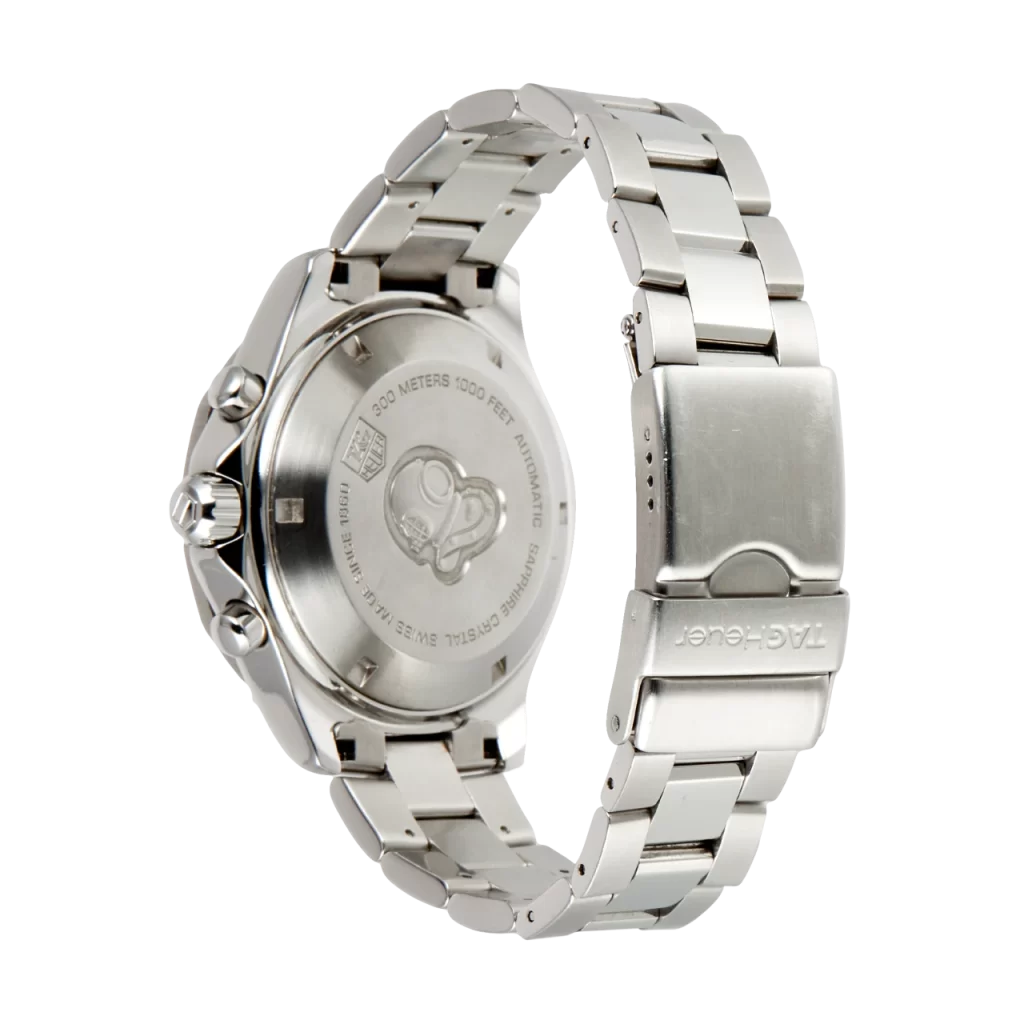
While the Heuer Carrera, introduced in 1963, was a paragon of clarity and understated elegance, the Monaco’s bold square case represented a seismic shift in design philosophy. It was a replica watch made to be noticed, one that aligned itself with the era’s spirit of daring progress. The Monaco was not just a chronograph; it was a statement of modernity, its visual language as unconventional as the world it inhabited.
A New Era of Materials and Technological Mastery
Fast forward to 2026, and the Monaco Chronograph continues to evolve with the same audacity that defined its origins. TAG Heuer has consistently pushed the boundaries of what is possible in watchmaking, and this year marks a significant leap forward in both materials and technology.
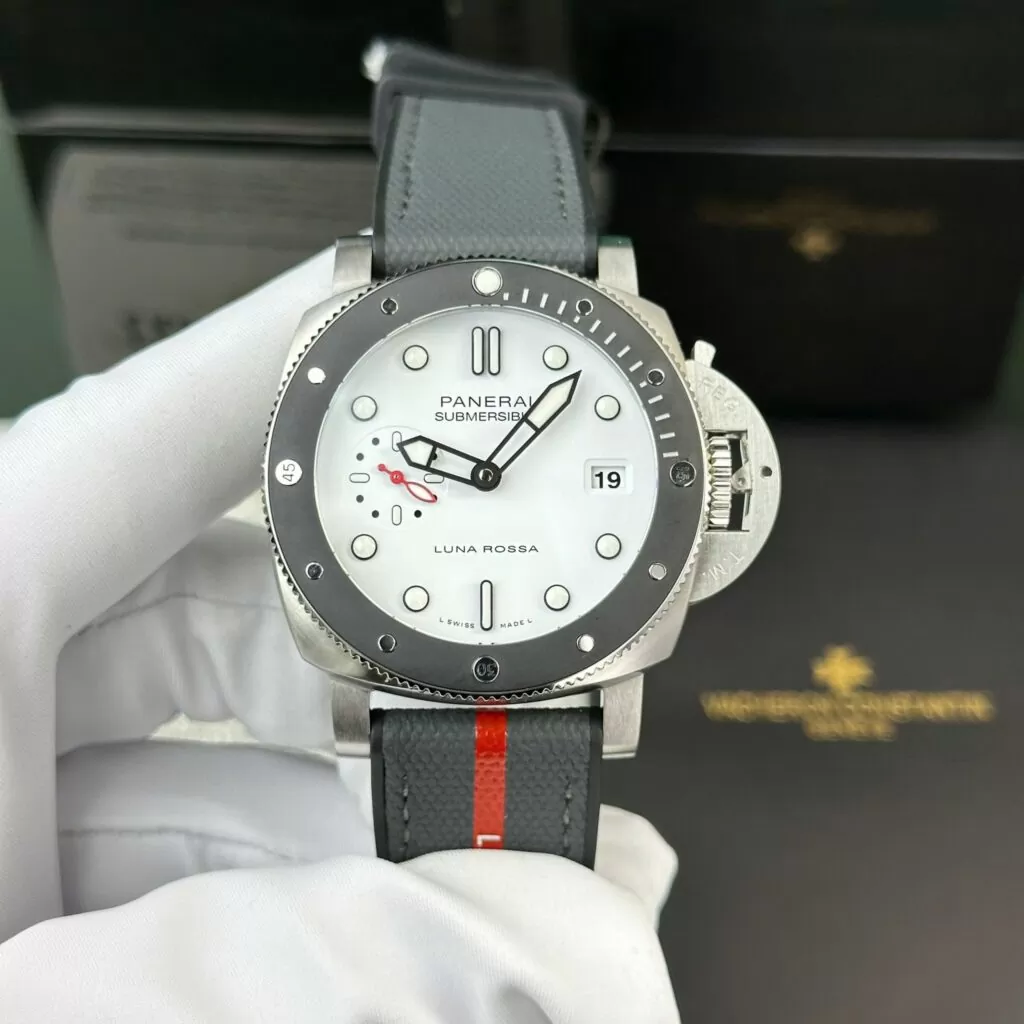
In early 2026, TAG Heuer introduced the Monaco Split-Seconds Chronograph F1 Edition (reference CBW2190), a watch that celebrated the brand’s return as the Official Timekeeper of Formula 1. This remarkable piece departed from tradition by featuring a case made from white ceramic – a first for the Monaco collection. The 41mm square case, pushers, and crown were all executed in brushed and polished white ceramic, a striking contrast to the usual metal cases of the Monaco. Red titanium accents added a touch of sportiness, while a red-tinted sapphire dial further heightened the watch’s dynamic aesthetic. The dial itself was a masterpiece of design, with bold white ceramic bridges arranged in an “X” motif, accompanied by applied lume indices and chronograph counters featuring black graining and vibrant red and yellow details. A playful tribute to the world of motorsport appeared on the dial in the form of the words “LIGHTS OUT” and “AWAY WE GO,” a nod to the iconic starting command of every Formula 1 race.
Later in 2026, TAG Heuer continued to break new ground with the Monaco Split-Seconds Chronograph TH Titanium (reference CBW2185), introducing a proprietary material developed over four years at the brand’s La Chaux-de-Fonds laboratory. This new alloy, known as TH Titanium, is a thermal-treated material that reveals natural, irregular patterns under light, giving each watch an entirely unique appearance. The 41mm case, weighing a mere 86 grams, was a study in modern engineering, with faceted surfaces that shifted subtly in the light. Lime-green accents on the transparent sapphire dial injected energy into the design, while the same TH81-00 calibre that powered previous models ensured the watch’s mechanical excellence.
A Leap Into the Future of Chronometry
2026 also marked a milestone in the development of replica TAG Heuer’s innovative TH-Carbonspring oscillator. After nearly a decade of refinement, this groundbreaking technology debuted in the Monaco Flyback Chronograph TH-Carbonspring and the Carrera Tourbillon Extreme Sport TH-Carbonspring. The Monaco Flyback Chronograph, introduced in late 2026, maintained the signature Monaco design while incorporating cutting-edge materials. The 39mm forged carbon case, including the crown and pushers, was both lighter and more rigid than steel. The dial, engraved with a spiral pattern referencing the geometry of the new oscillator, was as visually captivating as it was functional. The use of carbon throughout the watch, including the hands and indices, ensured that this Monaco was not only lightweight but also incredibly durable.
Powered by the Calibre TH20-60, a COSC-certified automatic flyback chronograph, the Monaco Flyback Chronograph was a testament to TAG Heuer’s commitment to pushing the boundaries of watchmaking. The standout feature of the watch was the TH-Carbonspring, a carbon-based oscillator that was lighter, amagnetic, and virtually unbreakable under shock. This new technology, grown in-house using a chemical vapor deposition (CVD) process, represented a revolution in horology, replacing the traditional silicon hairspring and removing one of the most failure-prone components in a watch movement.

The Monaco’s Ever-Evolving Story
The Monaco Chronograph has proven to be one of the most versatile and enduring replica watches in TAG Heuer’s collection. Since its debut in 1969, the Monaco has undergone numerous transformations, with each iteration adding to its rich legacy. The reference 1133B, famously worn by Steve McQueen in the film Le Mans, remains one of the most iconic Monaco models. Over the decades, the Monaco has embraced a wide range of materials, from the early steel cases to modern advancements in ceramics, titanium, and carbon. Concept models, such as the Monaco V4 (2004), Monaco 360 Concept (2006), and Monaco Mikrograph (2011), have explored new avenues in movement and design, challenging the very definition of what a chronograph can be.
Special editions, such as the Gulf-liveried CAW2113 and the Japan-only midnight blue models, have expanded the Monaco’s appeal, offering collectors and enthusiasts a diverse array of choices. The 2017 Bamford Edition, with its carbon case and luminous aqua-blue highlights, brought the Monaco firmly into the realm of modern streetwear, proving that this iconic square case could accommodate even the boldest of design ideas.
As we move further into the 21st century, the Monaco remains as relevant and innovative as ever. Whether through limited-edition releases, experimental concepts, or groundbreaking technological advances, the Monaco continues to evolve, reflecting TAG Heuer’s unwavering commitment to pushing the boundaries of watchmaking.
The Monaco’s Unexpected Charm
Though I was initially not among the Monaco’s most ardent admirers, my journey into its history and design has led me to a newfound appreciation for this iconic watch. The more I researched and delved into its evolution, the more I found myself captivated by its boldness and its ability to remain relevant after more than fifty years. The Monaco has proven time and again that it is not just a watch; it is a testament to the power of innovation, a symbol of the past, present, and future of horology.
